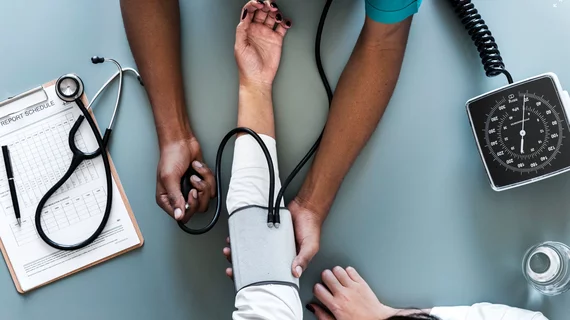CMS expands coverage for ambulatory BP monitoring
CMS on July 2 announced its finalized national coverage policy for ambulatory blood pressure monitoring (ABPM)—one that extends coverage to patients with suspected masked hypertension and aligns CMS’ BP thresholds with the latest society guidelines.
CMS reconsidered its national coverage determination (NCD) for ABPM in response to a request from stakeholders concerned that only patients with suspected white coat hypertension—the phenomenon in which a patient’s BP values are higher in their doctor’s office than at home—were covered for ABPM. Ambulatory monitoring allows physicians to track a patient’s BP over 24-hour cycles, while that patient moves through a regular day.
This latest revision extends coverage for ABPM to patients with suspected masked hypertension, as well—a condition that’s arguably the textbook opposite of white coat hypertension and is defined by higher BP measurements outside the doctor’s office.
“CMS is dedicated to improving cardiovascular health in the Medicare population,” CMS Administrator Seema Verma said in a statement. “Today’s decision reflects CMS’ commitment to continually updating our policies to ensure that more Medicare beneficiaries have access to the latest technology and appropriate evidence-based healthcare. We believe stakeholders will appreciate the policy being expanded to include diagnostic uses recommended by the multi-society task force blood pressure practice guidelines.”
In addition to widening coverage for ABPM, CMS’ new policy lowers the agency’s threshold for hypertension from 140/90 mm Hg to 130/80 mm Hg, which aligns with the latest society recommendations.
Going forward, ABPM will be covered for eligible patients once per year, with coverage of other indications for ABPM left to the discretion administrative contractors. To ensure coverage ABPM devices need to be capable of producing standardized plots of BP measurements for 24 hours; provided to patients with oral and written instructions; and be interpreted by the treating physician or practitioner.
Find the full text of the NCD here.

